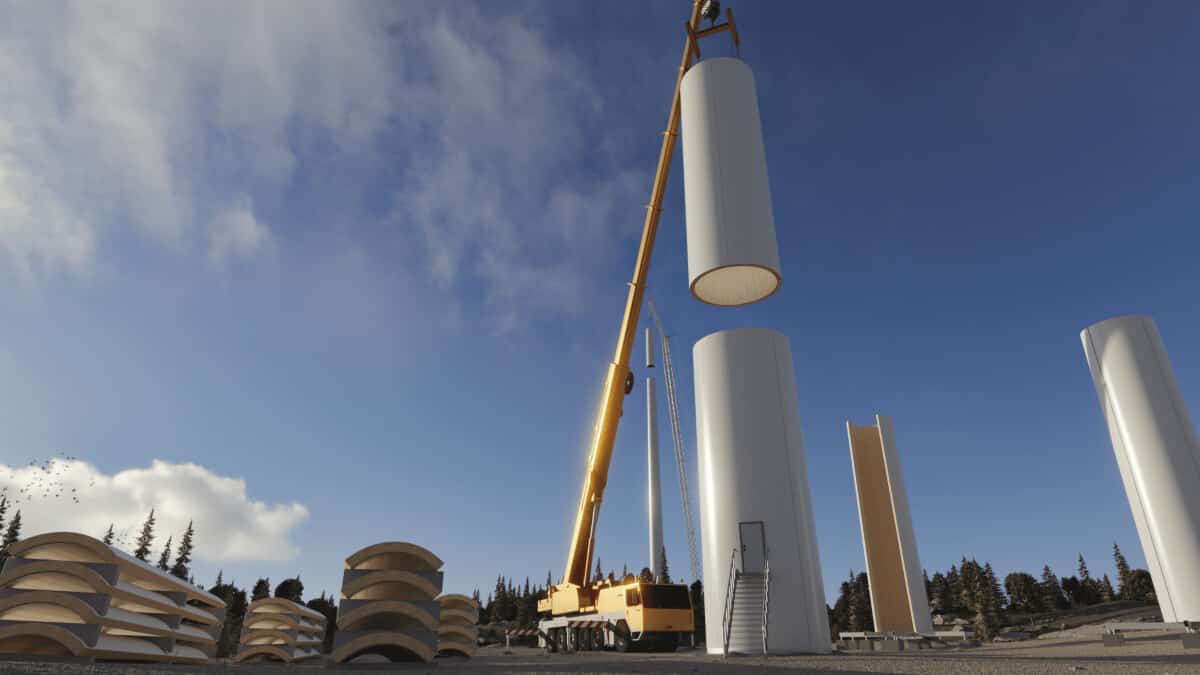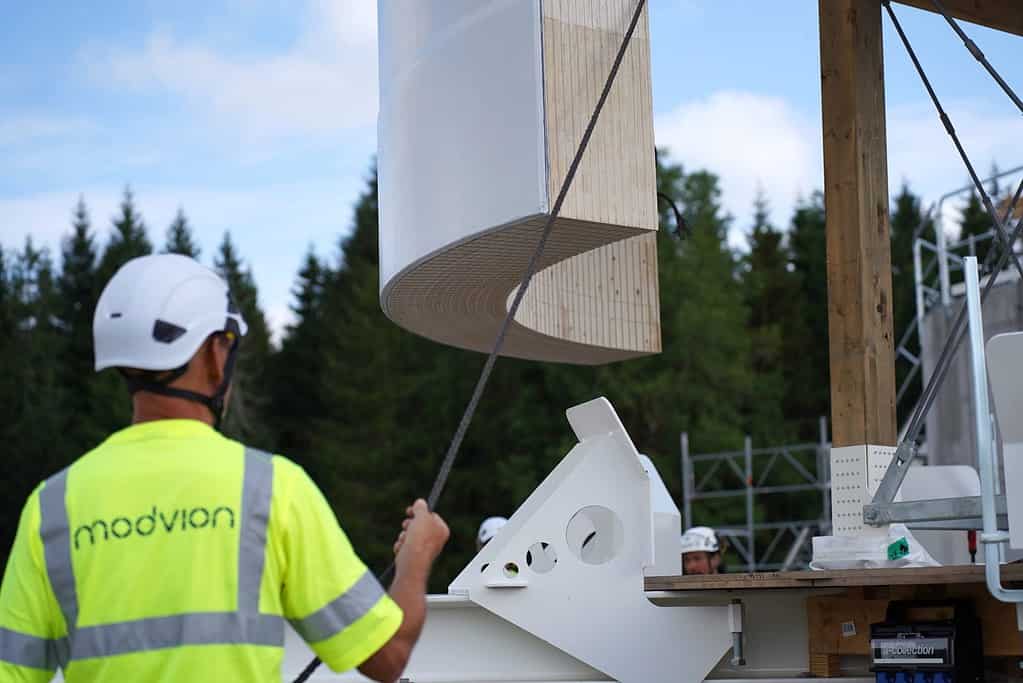
In a groundbreaking venture, Swedish engineers at Modvion are harnessing one of the oldest building materials in history to revolutionize wind power efficiency. Their unique wooden wind turbine, soon to be the world’s tallest, is making waves in the renewable energy industry. Wooden turbines are cheaper, more efficient, and even stronger than steel ones.
Modvion previously gained recognition for erecting the first wooden wind turbine tower on an island outside Gothenburg, Sweden, in May 2020. Now, they are ready to break new ground with their first commercial installation commissioned by Sweden-based energy company Varberg Energi.
Standing tall at 105 meters (344 feet) – including the blades – this impressive structure will help make wind power even more sustainable. The final modules, constructed using laminated veneer lumber, are currently in production at Modvion’s factory in Gothenburg, which opened last year.
To create the towering structure, the wooden modules made from Scandinavian spruce are assembled at the construction site, forming seven sections that will comprise the finished tower. Construction work began earlier this year on the foundation, and now the modules are being transported to the site for section assembly.

But why wood? The designers found that laminated wood, when integrated into the turbine structure, outperforms steel in both strength and weight. This makes wind power more efficient, tapping into stronger and more stable winds at higher elevations.
The tower’s wooden cylinders are assembled on-site, creating a hollow structure that allows for thicker walls and increased durability. Since wood is much lighter than steel, transportation becomes more manageable and environmentally friendly. Unlike conventional steel towers held together by bolts, Modvion’s wood design relies on glue and maximizes the natural strength of wood fibers.

Overall, Modvion’s wooden towers promise to generate 90% less carbon emissions compared to their metal counterparts during their operational lifespan. Building the tower in wood lowers the emissions from the wind power plant by approximately 30% per kWh.
Moreover, once decommissioned, the turbines are intended to be repurposed for other projects, adding to their overall sustainability. While 85% of a metal wind turbine can be recycled, virtually all turbine blades end up in landfills because they employ a stiff resin to bind balsa wood, carbon fiber, and glass together. In contrast, the laminated wood blades are 100% recyclable.
“Wood enables building higher towers at a lower cost, which makes wind power more efficient since winds are stronger and more stable higher up,” Otto Lundman, CEO of Modvion, said in a media statement.
Once the wooden tower comes online, it could power around 500 Swedish homes. The project is part-financed by the Swedish Energy Agency, the Västra Götaland region, and the EU program Horizon 2020 EIC Accelerator.






